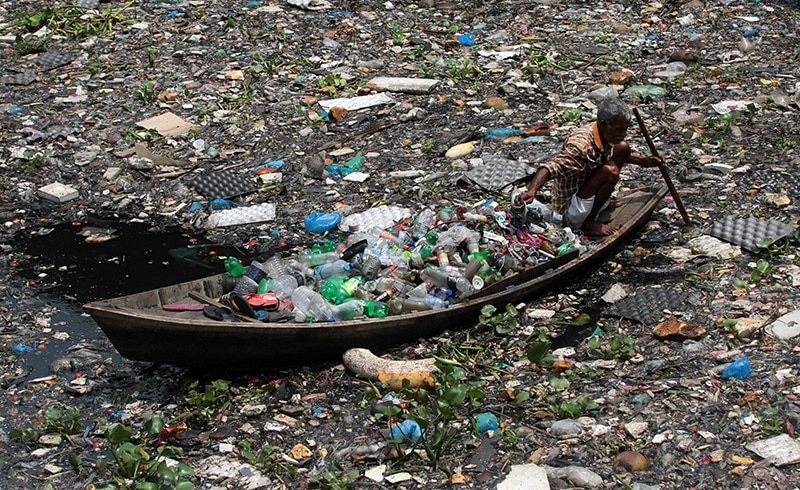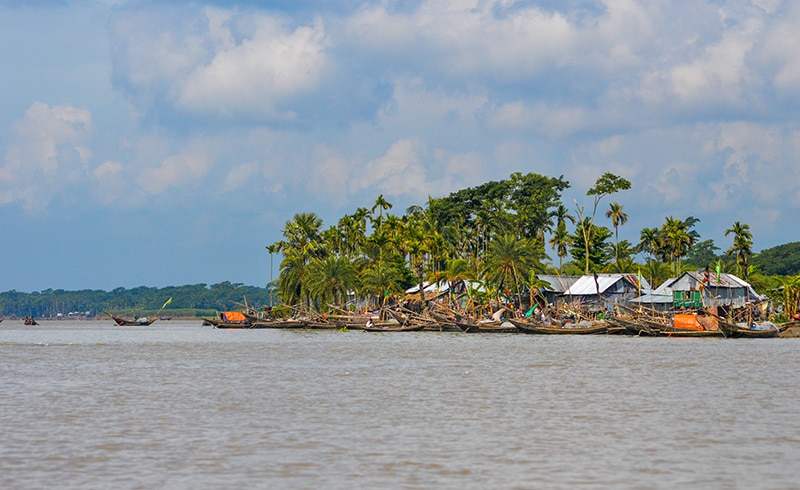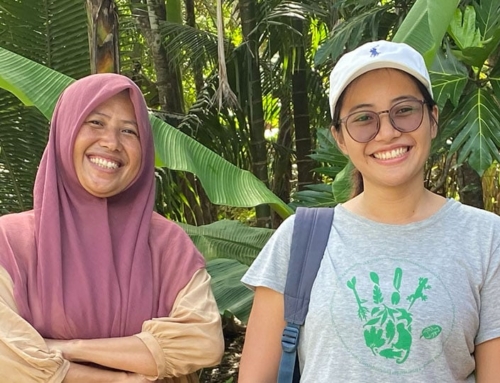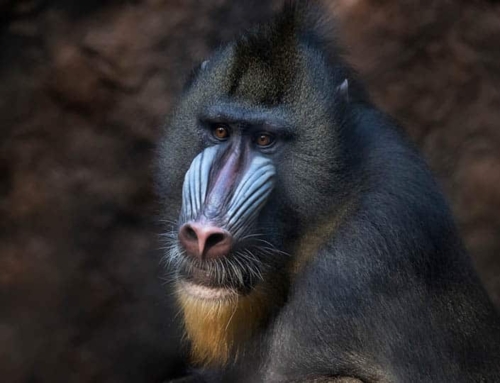Rivers are the planet’s arteries of life and are intrinsically linked to human well-being, history, culture, spirituality and politics. Yet, our legal system has largely proven to be ill-equipped to protect the world’s rivers and their inhabitants. A growing global movement sets out to change this by legally recognising and implementing the inherent rights of rivers, such as rights to exist, flourish and regenerate.
What is the ‘rights of rivers’ movement? Félix Feider explains what Earth jurisprudence means for the recovery of the world’s freshwater ecosystems.
Whanganui River
The Whanganui River in New Zealand has been home to Māori tribes for many centuries. These tribes have cared for the river, and the river has cared for them, for over 700 years.
However, this changed when European colonisers arrived in the 19th century. Māori tribes were officially stripped of their traditional sovereignty and authority as caretakers and guardians of the Whanganui River, putting an end to centuries of peaceful coexistence between human and non-human communities.
The river and its inhabitants were exploited, and its headwaters were diverted to support a hydroelectric power scheme. Indigenous Peoples had to stand by and watch Te Awa Tupua, their sacred river, being degraded and disgraced, causing environmental, social, cultural and spiritual suffering.

Whanganui River. Image: Jason Pratt CC-BY 2.0
In 2017, something momentous happened. After years of negotiations with representatives of the Whanganui iwi (tribe), the Aotearoa/New Zealand Parliament enacted the Te Awa Tupua Act (2017). This legally recognised Te Awa Tupua, the Whanganui River and all its physical and metaphysical elements, as an indivisible and living whole. The Act acknowledges the river as a source of physical and spiritual sustenance, and that communities living along the river have an “inalienable connection with, and responsibility to, Te Awa Tupua and its health and well-being”. The Te Awa Tupua Act also awarded all the rights, powers, duties and liabilities of a legal person to the river and established formal guardians to act on its behalf.
The legal recognition of the Te Awa Tupua is a unique manifestation of the Whanganui iwi’s relationship with the river rather than falling within any particular legal classification. It is important to remember that western law itself contributed to the stripping of Māori sovereignty. The compromise offered by providing the river with agency as a legal person is still a product of western law but was negotiated as a way to ensure a unifying legal foundation built around the Māori’s relationship with the River.
That being said, the story of this river provides a strong example of how to transform the law so that it harmonises with the natural world.
Hope for rivers and humanity
Earth jurisprudence is a philosophy and practice of law and human governance acknowledging that Nature, the complex web of life of which we are part, has intrinsic rights such as rights to exist, thrive and evolve. As this framework considers Nature to be a subject of the law rather than an object of the law, Nature is frequently capitalised to reinstate it as a proper noun.
The rights of Nature do not only encompass rivers; forests, mountains, and other living systems have been recognised as having rights, as well, along general laws applying to all of Nature. However, the legal precedent for rights of rivers have been a focal point of the implementation of Earth jurisprudence.
This concept is not a new invention; Indigenous Peoples and others around the world have defended and respected the integrity of Earth’s living systems through customary laws and traditions for centuries, understanding that we are a part of Nature and that humans have a responsibility to protect life. Now, if humankind is to solve the global ecological crises, we must listen to and work with Indigenous Peoples.
By contrast, current western legal systems and societies typically put humans above all other life on this planet; rivers, like other non-human living systems, are seen as resources to be exploited by humans often for profit-driven and short-sighted developments that benefit few and cause harm to many. The use of these so called ‘resources’ is often at a destructive rate that causes systemic and many times irreversible damage to these ecosystems, also referred to as ecocide.

River pollution in Bangladesh. Image: Maruf Rahman
The first step to correct this imbalance is for rivers and other elements of Nature to be recognised in law as legal entities with intrinsic rights. This enables designated guardians to defend the rights of rivers on their behalf, similar to how corporations are represented in court. Until environmentally and socially destructive activities cease to exist, these rights present a resilient and holistic approach to protecting rivers, freshwater ecosystems and species, and all people who share interdependent relationships with them.
Rivers recognised as living entities
The ‘rights of rivers’ movement has taken hold in recent years. In 2009, the Bangladeshi Supreme Court ordered the creation of a Bangladeshi National River Protection Commission to address core harms occurring to rivers. Ten years after this, the High Court of Bangladesh recognised all rivers as ‘living entities’ and appointed the Bangladeshi National River Protection Commission as their legal guardian.
This development signals an important paradigm shift, from a system of property-based ownership that enables and justifies environmental degradation to a system where rivers have legally recognised rights that can be enforced by a court of law.

Meghna River, Bangladesh. Image: Mohammad Mahabubur Rahman CC-BY 2.0
Although quite recent, the consequences of the Bangladeshi case have been prodigious. Since 2019, communities throughout the nation were able to plead for the protection and restoration of their rivers, leading to the demolition of 4,000 illegal structures, the recovery of 190 acres of land, and the closing of 231 unauthorised factories on the Buriganga River. All in less than two years!
Around the world, countries and legal systems are starting to recognise the need for – and potential of – this fundamental legal and cultural paradigm shift.
Shortly after the Whanganui River’s rights were legally recognised in 2017, Colombia’s Constitutional Court recognised the inherent rights of the Atrato River, followed by the State’s Surpreme Court recognising the rights of the entire Colombian Amazon.
The rights of rivers have also been recognised locally or regionally in India, the US, Brazil, Peru, and Canada, and nationally in Ecuador, Bangladesh, Bolivia and Uganda. In Australia, a legal decision finally gave a voice to the Yarra River’s traditional guardians.
These victories signal a beacon of hope for rivers and are only the beginning of an increasingly mainstreamed movement to recognise and uphold the inherent rights of the natural world. Driven and led by Indigenous Peoples, civil society and frontline communities, the rights of rivers movement is gaining momentum.

Atrato River, Colombia. Image: Esenyder Negrete
This movement shows no sign of slowing down, with ongoing campaigns to legally recognise the rights of rivers at various scales taking place in Nigeria, Chile, Mexico, El Salvador, Pakistan, and the US (Colorado and elsewhere) amongst other places. There are also civil society campaigns to recognise the rights of rivers in Europe, such as in France and the Balkans. This shows us that there is a clear global appetite to recognise the rights of rivers to effectively protect and restore the world’s arteries of life. The Rights of Rivers report lays out a global overview of the rapidly developing ‘Rights of Nature’ jurisprudence pertaining to rivers.
A recent win: Magpie River

Magpie River. Image: Alexander Markovic/CC BY-NC-SA 2.0
The Universal Declaration on the Rights of Rivers is already bearing fruit. Just as recently as in February 2021, in a first for Canada, the rights of the Magpie River in Quebec have been recognised by the local municipality of Minganie and the Innu Council of Ekuanitshit. A lot of the language and concepts used in this resolution have taken inspiration from the text of the Universal Declaration on the Rights of Rivers.
The chief of the Innu Council of Ekuanitshit, Jean-Charles Piétacho, highlighted that they have never been the owners of the river, but instead protectors of the Nitissinan – their ancestral territory. The recognition of the Rights of the Magpie, or Muteshekau-shipu in Innu Coet, now empowers them to care and look after the river and all life that it supports.
Reimagining our relationship within Nature
It is obvious that freshwater degradation and ecocide are not aligned with our global ambitions for a healthy, resilient, equitable and prosperous world. The ongoing pandemic has shown us how deeply intertwined humanity’s existence is with the rest of Nature, and what happens when these fragile relationships are abused. We need to take a step back and drastically re-imagine our relationships within Nature, the Earth’s web of life, and acknowledge the obvious connections between freshwater health and human health. For this, we need environmental law and policy that manages to holistically protect the world’s life-support systems.
The rights of rivers offer us an opportunity to do just this, to change how we view and interact with the rest of Nature, an opportunity to acknowledge that we are as much a part of Nature as any other species, and that this comes along with a set of responsibilities that we have been neglecting for too long. This is a tool which we can implement to re-establish a compassionate, resilient and respectful relationship with all of Nature in which we recognise our responsibilities and the consequences of our actions; a tool that can enable us to meet our global ambitions for a healthier, more equitable and inclusively prosperous world. With everything to gain, let us strive towards this world in which the planet can prosper as one whole.
You can contribute to this game-changing movement today by signing the Universal Declaration of the Rights of Rivers, either as an individual or as an organisation, or the Global Rivers for Recovery Call, either as an individual or as an organisation. Be part of the change, be part of the future.
A call to action
International Rivers, one of Synchronicity Earth’s Freshwater Programme partners, is working with Earth Law Center to build on the success stories so far and to catalyse the mainstreaming and implementation of the rights of rivers around the world. Together, they launched the Universal Declaration of the Rights of Rivers in 2020. The Declaration is the result of input given from dozens of scientists, Indigenous Peoples, lawyers, and community leaders.
The Universal Declaration of the Rights of Rivers urges decision-makers to “stand with a growing international movement to protect rivers, freshwater ecosystems, and all who depend upon them for their lives and livelihoods.” It has so far been signed by more than 100 organisations from more than 20 countries around the world, including Synchronicity Earth.
The Declaration sets out the fundamental rights of rivers that arise from a river’s existence on our shared planet. These fundamental rights include the right to flow freely, to perform essential functions within its ecosystem, to be free from pollution, to feed and be fed by sustainable aquifers, to native biodiversity, and to regeneration and restoration. The Declaration also asserts that each river shall be entitled to the independent appointment of one or more legal guardians that acts solely on behalf of the river’s rights.
This document aims to bring together people, communities and organisations that are advocating for the rights of rivers, to build momentum and international consensus on the fundamental rights to which all rivers are entitled. It is important to highlight that this declaration is not about creating a system that protects rivers and disregards human rights. This is about “the creation of a new legal and social paradigm based on living in harmony with Nature” which promotes the rights of Nature and the human rights formulated by the UN in 1948, as we are an integral part of Nature.
Acknowledgments
We thank Monti Aguirre (International Rivers), Hana Begovic (Earth Advocacy Youth), and Grant Wilson and Michelle Bender (Earth Law Center) for their kind, knowledgeable and meaningful contributions to this article.






